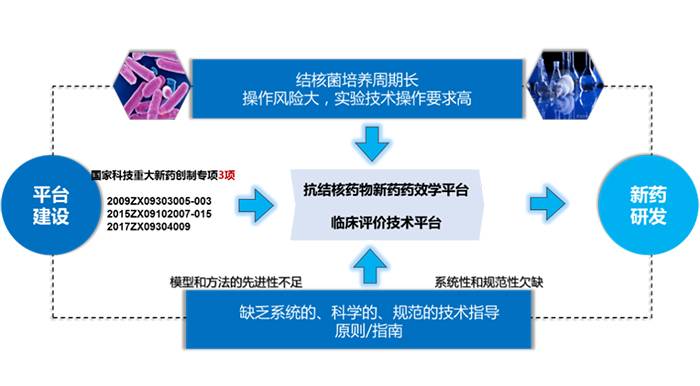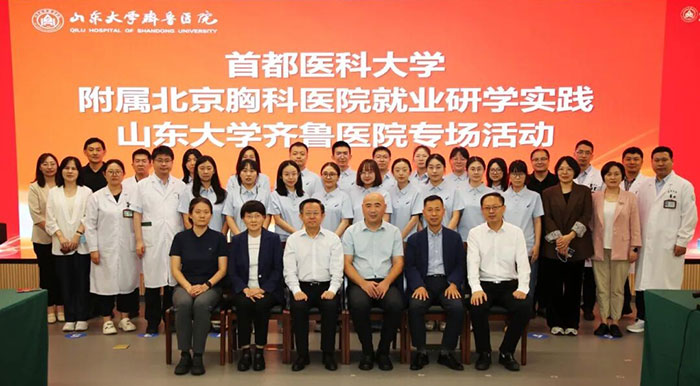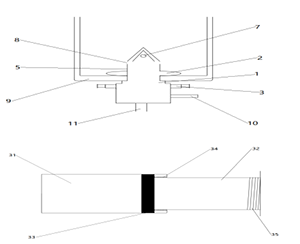2025年
No.3
PubMed
(tuberculosis[Title/Abstract]) OR (lung cancer[Title/Abstract])
Filters applied: from 2025/3/1 - 2025/3/31
1. Cell. 2025 Mar 6;188(5):1248-1264.e23. doi: 10.1016/j.cell.2025.01.024. Epub 2025 Feb 6.
GUK1 activation is a metabolic liability in lung cancer.
Schneider JL(1), Kurmi K(2), Dai Y(3), Dhiman I(2), Joshi S(2), Gassaway BM(2)
Little is known about metabolic vulnerabilities in oncogene-driven lung cancer. Here, we perform a phosphoproteomic screen in anaplastic lymphoma kinase (ALK)-rearranged ("ALK+") patient-derived cell lines and identify guanylate kinase 1 (GUK1), a guanosine diphosphate (GDP)-synthesizing enzyme, as a target of ALK signaling in lung cancer. We demonstrate that ALK binds to and phosphorylates GUK1 at tyrosine 74 (Y74), resulting in increased GDP biosynthesis. Spatial imaging of ALK+ patient tumor specimens shows enhanced phosphorylation of GUK1 that significantly correlates with guanine nucleotides in situ. Abrogation of GUK1 phosphorylation reduces intracellular GDP and guanosine triphosphate (GTP) pools and decreases mitogen-activated protein kinase (MAPK) signaling and Ras-GTP loading. A GUK1 variant that cannot be phosphorylated (Y74F) decreases tumor proliferation in vitro and in vivo. Beyond ALK, other oncogenic fusion proteins in lung cancer also regulate GUK1 phosphorylation. These studies may pave the way for the development of new therapeutic approaches by exploiting metabolic dependencies in oncogene-driven lung cancers.
PMID: 39919745 [Indexed for MEDLINE]
2. MedComm (2020). 2025 Feb 23;6(3): e70116. doi: 10.1002/mco2.70116. eCollection 2025 Mar.
Ferroptosis in Pulmonary Disease and Lung Cancer: Molecular Mechanisms, Crosstalk Regulation, and Therapeutic Strategies.
Guo D(1), Cai S(2), Deng L(1), Xu W(3), Fu S(1), Lin Y(1), Jiang T(1), Li Q(1)
Ferroptosis is a distinct form of iron-dependent programmed cell death characterized primarily by intracellular iron accumulation and lipid peroxidation. Multiple cellular processes, including amino acid metabolism, iron metabolism, lipid metabolism, various signaling pathways, and autophagy, have been demonstrated to influence the induction and progression of ferroptosis. Recent investigations have elucidated that ferroptosis plays a crucial role in the pathogenesis of various pulmonary disorders, including lung injury, chronic obstructive pulmonary disease, pulmonary fibrosis, and asthma. Ferroptosis is increasingly recognized as a promising novel strategy for cancer treatment. Various immune cells within the tumor microenvironment, including CD8+ T cells, macrophages, regulatory T cells, natural killer cells, and dendritic cells, have been shown to induce ferroptosis in tumor cells and modulate the process through the regulation of iron and lipid metabolism pathways. Conversely, ferroptosis can reciprocally alter the metabolic environment, leading to the activation or inhibition of immune cell functions, thereby modulating immune responses. This paper reviews the molecular mechanism of ferroptosis and describes the tumor immune microenvironment, discusses the connection between ferroptosis and the tumor microenvironment in lung cancer and pulmonary diseases, and discusses the development prospect of their interaction in the treatment of lung cancer and pulmonary diseases.
PMID: 39991627
3. J Thorac Oncol. 2025 Mar;20(3):345-365. doi: 10.1016/j.jtho.2024.11.003. Epub 2024 Nov 12.
DSTYK Inhibition Sensitizes NSCLC to Taxane-Based Chemotherapy.
Echepare M(1), Picabea B(2), Arricibita A(3), Teijeira Á(4), Pasquier A(3)
INTRODUCTION: Chemotherapy continues to be the standard treatment for patients noneligible for targeted or immune-based therapies; nevertheless, treatment resistance remains a major clinical challenge. We previously found that expression levels of DSTYK, a poorly explored dual serine/threonine and tyrosine kinase frequently amplified in cancer, identified patients with lung cancer exhibiting poor response to immune checkpoint inhibitors, and found that its inhibition sensitizes to immunotherapy. Seeking to explore the potential of DSTYK targeting in additional indications, we investigated the functional relevance and actionability of DSTYK in lung cancer chemoresistance.
METHODS: In silico analysis to study the differential sensitivity to paclitaxel, carboplatin, pemetrexed, and cisplatin drugs was performed using pan-cancer human cancer cell line DSTYK CN data downloaded from Depmap portal (https://depmap.org/portal/depmap/). Two cohorts of patients with lung cancer were used. An adjuvant cohort composed of patients with advanced IV-stage lung adenocarcinoma treated with carboplatin plus paclitaxel or carboplatin plus pemetrexed in the first line from VHIO; A neoadjuvant cohort including resectable stage IIIA or IIIB NSCLC tumor samples of patients from NADIM I and NADIM II clinical trials perioperative treated with nivolumab plus chemotherapy (carboplatin + paclitaxel). DSTYK CN was assessed by fluorescence in situ hybridization and quantitative reverse transcription-polymerase chain reaction. Proteomics and bioinformatic analyses were performed to study differentially expressed protein signatures. Functional in vitro experiments (adhesion, migration, and invasion) in both murine and human systems, and in vivo lung orthotopic, intracardiac, and intratibial xenograft and syngeneic models complete the study.
RESULTS: We show that DSTYK depletion specifically sensitizes lung cancer cells to taxane-based chemotherapy, particularly in combination with carboplatin. Mechanistically, DSTYK ablation remodels the cytoskeleton and impairs distant invasion and metastatic outgrowth in vivo. DSTYK downregulation sensitizes both primary and metastatic lung tumors to chemoimmunotherapy treatment leading to tumor regression in mouse models. Consistently, clinical data of patients with early and advanced lung cancer-in the neoadjuvant and adjuvant settings-show a strong correlation between DSTYK amplification and taxane resistance, underscoring the clinical significance of our findings to inform treatment decision-making.
CONCLUSIONS: Collectively, our data indicates that DSTYK amplification may be a predictor of resistance to taxane-based treatments and represents an actionable target for these patients.
PMID: 39536877 [Indexed for MEDLINE]
4. Pulmonology. 2025 Dec 31;31(1):2416801. doi: 10.1016/j.pulmoe.2023.07.002. Epub 2024 Oct 24.
Vaccination in post-tuberculosis lung disease management: A review of the evidence.
Nasiri MJ(1), Silva DR(2), Rommasi F(1), Zahmatkesh MM(1), Tajabadi Z(1)
INTRODUCTION AND OBJECTIVES: Post-tuberculosis lung disease (PTLD), as other chronic respiratory disorders, may have infectious complications; some of them can be prevented with vaccinations. So far, no document has discussed the potential role of vaccination in PTLD. Therefore, the objective of this review was to describe vaccination recommendations to prevent infections potentially capable of complicating PTLD.
MATERIALS AND METHODS: A non-systematic review of the literature was conducted. The following keywords were used: tuberculosis, vaccination, vaccines and PTLD. PubMed/MEDLINE and Embase were used as the search engine, focusing on English-language literature only.
RESULTS: We identified 9 vaccines potentially useful in PTLD. Influenza, pneumococcal and anti-COVID-19 vaccinations should be recommended. Patients with PTLD can also benefit from vaccination against shingles. Vaccination against pertussis is mainly relevant during childhood. Diphtheria, tetanus and measles vaccination are recommended for general population and should be considered in patients with PTLD not previously vaccinated. Tdap (Tetanus, diphtheria, and pertussis) booster should be repeated in every adult every ten years. Vaccination against BCG retains its importance during early childhood in countries where TB is endemic.
CONCLUSIONS: Vaccination deserves to be considered among the strategies to prevent and/or mitigate PTLD complications. Further evidence is necessary to better understand which vaccines have the greatest impact and cost-benefit.
PMID: 37679219 [Indexed for MEDLINE]
5. Lancet HIV. 2025 Mar 21:S2352-3018(25)00040-2. doi: 10.1016/S2352-3018(25)00040-2. Online ahead of print.
Tuberculosis disease among people with HIV: therapeutic advances.
Mave V(1), Paradkar M(2), Conradie F(3), Gupta A(4), Avihingsanon A(5)
Over the past 80 years, tuberculosis treatment has evolved with the development of all-oral treatments, which are now given for 4-6 months for drug-sensitive tuberculosis and 6-9 months for drug-resistant tuberculosis. Treatment success is often reduced among people with HIV due to an interplay of factors, including immune dysregulation, lower drug concentrations, complexities of cotreatment (eg, high pill burden and overlapping toxicities), and social factors. Recent clinical trials have shown that among adults and adolescents, treatment duration can be decreased to 4 months with repurposed therapeutics for drug-sensitive tuberculosis, and a four-drug regimen of isoniazid, rifapentine, moxifloxacin, and pyrazinamide has become part of WHO recommendations. Among children with drug-sensitive, non-severe tuberculosis disease, a 4-month regimen of standard tuberculosis drugs (eg, isoniazid, rifampicin, pyrazinamide, and ethambutol) is non-inferior to a 6-month regimen. Following recent research advances for drug-resistant tuberculosis, a 6-month regimen containing a potent combination of bedaquiline, pretomanid, linezolid, and moxifloxacin is a new standard for people with and without HIV. The tuberculosis drug development pipeline contains promising new therapeutics in various stages of development. To accelerate tuberculosis elimination, future research should focus on shortened treatment duration, and safer and effective therapeutics for tuberculosis-affected populations globally, including people with HIV, children, and pregnant people, and should assess newer modalities of treatment delivery.
PMID: 40147460
6. Trends Immunol. 2025 Mar 22: S1471-4906(25)00052-3. doi: 10.1016/j.it.2025.02.009. Online ahead of print.
Oxidative battles in tuberculosis: walking the ferroptotic tightrope.
Araújo-Pereira M(1), Andrade BB(2).
Tuberculosis (TB), caused by Mycobacterium tuberculosis (Mtb), remains one of the leading causes of death worldwide. TB pathogenesis is shaped by a complex interaction between the pathogen and host immune responses, particularly through mechanisms such as oxidative stress and ferroptosis; a form of regulated necrotic cell death driven by iron-dependent lipid peroxidation. This Review highlights recent insights into how Mtb modulates oxidative stress pathways and thus triggers ferroptosis in host cells. Understanding the interplay between oxidative stress responses and cellular and tissue necrosis opens new avenues for therapeutic interventions of TB by controlling bacterial growth and preventing host tissue damage.
PMID: 40122726
7. Lancet Glob Health. 2025 Mar;13(3): e593-e598. doi: 10.1016/S2214-109X(24)00481-9. Epub 2025 Jan 22.
Tuberculosis and people who use drugs: why focus on this overlooked population is important and why adapted interventions are necessary.
D'Ottavi M(1), Godfrey-Faussett P(2), Merle CS(3), Sofonea MT(4), Laureillard D(5)
People who use drugs show a higher incidence and prevalence of tuberculosis than people who do not use drugs in areas where Mycobacterium tuberculosis is endemic. However, this population is largely neglected in national tuberculosis programmes. Strategies for active case finding, screening, and linkage to care designed for the general population are not adapted to the needs of people who use drugs, who are stigmatised and difficult to reach. Moreover, access to care, linkage to care, and treatment adherence are challenging for such a marginalised population. Learning from the HIV field about successful interventions targeting this group, we advocate for the implementation of tuberculosis interventions adapted for people who use drugs, highlighting the key role that community-based approaches could have in both design and implementation. Alongside reducing health inequities by reducing the excess tuberculosis burden among people who use drugs, these targeted interventions can also reduce tuberculosis transmission at the population level.
PMID: 39862874 [Indexed for MEDLINE]
8. J Thorac Oncol. 2025 Mar;20(3):296-310. doi: 10.1016/j.jtho.2024.11.020. Epub 2024 Nov 22.
Low Dose Computed Tomography for Lung Cancer Screening in Tuberculosis Endemic Countries: A Systematic Review and Meta-Analysis.
Damaraju V(1), Krushna Karri JK(2), Gandrakota G(2), Marimuthu Y(3)
INTRODUCTION: Lung cancer screening (LCS) using low-dose computed tomography (LDCT) reduces mortality. Nevertheless, in high tuberculosis-burden countries (HTBC), there are concerns about high false-positive rates due to persistent lung lesions from prior tuberculosis (TB) infections. This study aims to evaluate the screen-positive rate (SPR) of LDCT screening in HTBC.
METHODS: We conducted a systematic review and meta-analysis to identify studies utilizing LDCT for LCS in HTBC and reported SPR from inception to December 6, 2023. The primary outcome was the SPR, and the secondary outcome was the lung cancer detection rate (LCDR). The summary data was pooled using a random-effects model, and factors influencing the SPR were analyzed using multivariable meta-regression analysis.
RESULTS: A total of 44 studies with 477,424 individuals (59.3% men) were included in the systematic review. Lung Imaging Reporting and Data System (Lung-RADS) (31%, 14 studies) and National Lung Screening Trial (NLST) criteria (non-calcified nodule ≥ 4 mm; 10 studies) were the most common criteria used for assessing SPR. The pooled SPR and LCDR were 18.36% (95% confidence interval [CI]: 14.6-22.1) and 0.94% (95% confidence interval: 0.75-1.15), respectively. Although SPR was significantly higher with NLST criteria than Lung-RADS criteria (25.6% versus 10.4%, p < 0.0001), the LCDR remained similar (0.91% versus 0.95%, p = 0.92). Studies using NLST criteria had a higher SPR in multivariable meta-regression analysis. Nevertheless, the analysis is limited by significant statistical heterogeneity and publication bias.
CONCLUSION: Lung cancer screening by LDCT in HTBC demonstrates comparable SPR and LCDR to regions with lower TB incidence rates. Lung-RADS criteria are preferable to NLST criteria for LCS in HTBC to mitigate false-positive rates.
PMID: 39581379 [Indexed for MEDLINE]
9. J Thorac Oncol. 2025 Mar;20(3):331-344. doi: 10.1016/j.jtho.2024.11.022. Epub 2024 Nov 26.
FGTI-2734 Inhibits ERK Reactivation to Overcome Sotorasib Resistance in KRAS G12C Lung Cancer.
Kazi A(1), Vasiyani H(1), Ghosh D(1), Bandyopadhyay D(2), Shah RD(3), Vudatha V(3)
INTRODUCTION: KRAS G12C targeted therapies, such as sotorasib, represent a major breakthrough, but overall response rates and progression-free survival for patients with KRAS G12C lung cancer are modest due to the emergence of resistance mechanisms involving adaptive reactivation of ERK, which requires wild-type HRAS and NRAS membrane localization.
METHODS AND RESULTS: Here, we demonstrate that the dual farnesyltransferase and geranylgeranyltransferase-1 inhibitor FGTI-2734 inhibits wild-type RAS membrane localization and sotorasib-induced ERK feedback reactivation, and overcomes sotorasib adaptive resistance. The combination of FGTI-2734 and sotorasib is synergistic at inhibiting the viability and inducing apoptosis of KRAS G12C lung cancer cells, including those highly resistant to sotorasib. FGTI-2734 enhances sotorasib's anti-tumor activity in vivo leading to significant tumor regression of a patient-derived xenograft (PDX) from a patient with KRAS G12C lung cancer and several xenografts from highly sotorasib-resistant KRAS G12C human lung cancer cells. Importantly, treatment of mice with FGTI-2734 inhibited sotorasib-induced ERK reactivation in KRAS G12C PDX, and treatment of mice with the combination of FGTI-2734 and sotorasib was also significantly more effective at suppressing in vivo the levels of P-ERK in sotorasib-resistant human KRAS G12C lung cancer xenografts and the NSCLC PDX.
CONCLUSION: Our findings provide a foundation for overcoming sotorasib resistance and potentially improving the treatment outcomes of KRAS G12C lung cancer.
PMID: 39603412 [Indexed for MEDLINE]
10. Lancet Respir Med. 2025 Mar 21:S2213-2600(24)00429-6. doi: 10.1016/S2213-2600(24)00429-6. Online ahead of print.
Post-tuberculosis lung disease: towards prevention, diagnosis, and care.
Meghji J(1), Auld SC(2), Bisson GP(3), Khosa C(4), Masekela R(5), Navuluri N(6)
There is a growing body of data describing the high burden of respiratory sequelae seen among tuberculosis survivors, including children, adolescents, and adults. This group of sequelae are known as post-tuberculosis lung disease and include parenchymal damage, airway disease, and pulmonary vascular disease. It is thought that approximately half of pulmonary tuberculosis survivors have ongoing structural pathology, lung function impairment, or respiratory symptoms after the resolution of active disease. Post-tuberculosis lung disease has been associated with adverse patient outcomes, including persistent symptoms and functional impairment, ongoing health seeking, and impacts on income and employment. There is still much to understand about the epidemiology and nature of post-tuberculosis lung disease, but in this Review we focus on strategies for prevention, diagnosis, and care to inform the ongoing work of tuberculosis-affected communities, health-care providers, researchers, and policy makers. We summarise recent data, highlight evidence gaps, and suggest key research priorities for those working in the field.
PMID: 40127662
11. Mol Cancer. 2025 Mar 17;24(1):82. doi: 10.1186/s12943-025-02283-0.
o8G-modified circPLCE1 inhibits lung cancer progression via chaperone-mediated
autophagy.
Zhao Q(#)(1)(2), Cai D(#)(1)(2), Xu H(#)(1)(2), Gao Y(1)(2), Zhang R(1)(2)
BACKGROUND: Lung cancer poses a serious threat to human health, but its molecular mechanisms remain unclear. Circular RNAs (circRNAs) are closely associated with tumour progression, and the important role of 8-oxoguanine (o8G) modification in regulating the fate of RNA has been gradually revealed. However, o8G modification of circRNAs has not been reported. We identified circPLCE1, which is significantly downregulated in lung cancer, and further investigated the o8G modification of circPLCE1 and the related mechanism in lung cancer progression.
METHODS: We identified differentially expressed circRNAs by RNA high-throughput sequencing and then conducted methylated RNA immunoprecipitation (MeRIP), immunofluorescence (IF) analysis, crosslinking immunoprecipitation (CLIP) and actinomycin D (ActD) assays to explore circPLCE1 o8G modification. The biological functions of circPLCE1 in vivo and in vitro were clarified via establishing a circPLCE1 silencing/overexpression system. Tagged RNA affinity purification (TRAP), RNA Immunoprecipitation (RIP) and coimmunoprecipitation (Co-IP) assays, and pSIN-PAmCherry-KFERQ-NE reporter gene were used to elucidate the molecular mechanism by which circPLCE1 inhibits lung cancer progression.
RESULTS: This study revealed that reactive oxygen species (ROS) can induce circPLCE1 o8G modification and that AUF1 can mediate a decrease in circPLCE1 stability. We found that circPLCE1 significantly inhibited lung cancer progression in vitro and in vivo and that its expression was associated with tumour stage and prognosis. The molecular mechanism was elucidated: circPLCE1 targets the HSC70 protein, increases its ubiquitination level, regulates ATG5-dependent macroautophagy via the chaperone-mediated autophagy (CMA) pathway, and ultimately inhibits lung cancer progression.
CONCLUSION: o8G-modified circPLCE1 inhibits lung cancer progression through CMA to inhibit macroautophagy and alter cell fate. This study provides not only a new theoretical basis for elucidating the molecular mechanism of lung cancer progression but also potential targets for lung cancer treatment.
PMID: 40098195 [Indexed for MEDLINE]
12. Lancet Infect Dis. 2025 Mar;25(3):e153-e164. doi: 10.1016/S1473-3099(24)005875.
Epub 2024 Nov 29.
Barriers and facilitators to the implementation of electronic monitors to improve adherence and health outcomes in patients with tuberculosis: a systematic review.
Li W(1), Wu S(2), Su M(3), Saad A(4), Zhang W(1), Fan X(5), Li R(6), Gao Y(7)
Tuberculosis remains a public health concern, and electronic monitors show promise in improving treatment adherence and health outcomes among patients with tuberculosis. This Review aims to provide a comprehensive understanding of the implementation barriers and facilitators of electronic monitors for patients with tuberculosis, by use of an implementation science framework. A literature search was done across Ovid MEDLINE, CINAHL, Embase, Cochrane Library, Web of Science, and Global Health databases from their inception to April 25, 2024. Studies reporting on the barriers and facilitators of electronic monitors among patients with tuberculosis were included and study characteristics and evidence were tabulated. Implementation factors were synthesised applying the updated Consolidated Framework for Implementation Research framework. This Review was registered with PROSPERO (CRD42023395747). Of 8816 records, 31 eligible studies were included. Barriers mainly included the information technology infrastructure, materials, and equipment resources, whereas facilitators included access to knowledge and information, communications, and reflecting and evaluating. Innovation design and patients' motivation were identified as both common barriers and facilitators. Inter-relationships between these factors were also explored. Cooperative and patient-centred efforts are required to address the barriers identified. Specific recommendations include improving education and training, eliminating stigma, and resolving technical challenges with feedback to boost patients' treatment adherence and outcomes.
PMID: 39622263 [Indexed for MEDLINE]
13. Lancet Reg Health Eur. 2025 Jan 31;51:101221. doi: 10.1016/j.lanepe.2025.101221. eCollection 2025 Apr.
Eligibility criteria for lung cancer screening in France: a modelling study.
Feng X(1), Alcala K(1), Guida F(2), Goldberg M(3), Zins M(3), Leleu O(4), Cao P(5)
BACKGROUND: We estimated the potential impact of different eligibility criteria for lung cancer screening in France, to inform a planned national pilot program.
METHODS: We simulated the French population by integrating national population estimates and smoking prevalence with lung cancer risk factors from the
CONSTANCES cohort. We predicted lung cancer cases and deaths using the Lung Cancer [Death] Risk Assessment Tool for individuals with a smoking history. We evaluated four screening eligibility strategies: the US Preventive Services Task Force criteria (USPSTF) 2013, USPSTF-2021, NELSON, and a risk-based strategy (PLCOm2012 model).
FINDINGS: We simulated 14,860,000 individuals with a smoking history aged 50-80 years in France. We estimated 11,000-14,000 preventable lung cancer deaths over 5 years by screening 2.4-4.0 million individuals, depending on eligibility criteria. When screening the same number of individuals, we estimated the risk-based strategy would identify an additional 12-22% preventable lung cancer deaths compared with categorical criteria. Individuals selected by risk-based criteria were typically 5-7 years older, with 4-6 years shorter life expectancy, but categorical criteria selected many individuals with low anticipated screening benefit (33% among USPSTF-2021-eligible). Restricting to individuals aged 50-74, 55-80, and 55-74 years gave smaller differences between categorical and risk-based criteria in age (2-6 years difference), life expectancy (2-5 years difference), and preventable lung cancer deaths (6-17% difference).
INTERPRETATION: Screening high-risk individuals for lung cancer might prevent over 10,000 lung cancer deaths in France over 5 years, with potentially higher efficiency for risk-based eligibility compared with categorical criteria.
PMID: 39968190
14. Lancet Infect Dis. 2025 Mar;25(3):325-334. doi: 10.1016/S1473-3099(24)00586-3. Epub 2024 Oct 29.
Evaluating culture-free targeted next-generation sequencing for diagnosing drug-resistant tuberculosis: a multicentre clinical study of two end-to-end commercial workflows.
Colman RE(1), Seifert M(2), De la Rossa A(3), Georghiou SB(3), Hoogland C(3)
BACKGROUND: Drug-resistant tuberculosis remains a major obstacle in ending the global tuberculosis epidemic. Deployment of molecular tools for comprehensive drug resistance profiling is imperative for successful detection and characterisation of tuberculosis drug resistance. We aimed to assess the diagnostic accuracy of a new class of molecular diagnostics for drug-resistant tuberculosis.
METHODS: We conducted a prospective, cross-sectional, multicentre clinical evaluation of the performance of two targeted next-generation sequencing (tNGS) assays for drug-resistant tuberculosis at reference laboratories in three countries (Georgia, India, and South Africa) to assess diagnostic accuracy and index test failure rates. Eligible participants were aged 18 years or older, with molecularly confirmed pulmonary tuberculosis, and at risk for rifampicin-resistant tuberculosis. Sensitivity and specificity for both tNGS index tests (GenoScreen Deeplex Myc-TB and Oxford Nanopore Technologies [ONT] Tuberculosis Drug Resistance Test) were calculated for rifampicin, isoniazid, fluoroquinolones (moxifloxacin, levofloxacin), second line-injectables (amikacin, kanamycin, capreomycin), pyrazinamide, bedaquiline, linezolid, clofazimine, ethambutol, and streptomycin against a composite reference standard of phenotypic drug susceptibility testing and whole-genome sequencing.
FINDINGS: Between April 1, 2021, and June 30, 2022, 832 individuals were invited to participate in the study, of whom 720 were included in the final analysis (212, 376, and 132 participants in Georgia, India, and South Africa, respectively). Of 720 clinical sediment samples evaluated, 658 (91%) and 684 (95%) produced complete or partial results on the GenoScreen and ONT tNGS workflows, respectively, with 593 (96%) and 603 (98%) of 616 smear-positive samples producing tNGS sequence data. Both workflows had sensitivities and specificities of more than 95% for rifampicin and isoniazid, and high accuracy for fluoroquinolones (sensitivity approximately ≥94%) and second line-injectables (sensitivity 80%) compared with the composite reference standard. Importantly, these assays also detected mutations associated with resistance to critical new and repurposed drugs (bedaquiline, linezolid) not currently detectable by any other WHO-recommended rapid diagnostics on the market. We note that the current format of assays have low sensitivity (≤50%) for linezolid and more work on mutations associated with drug resistance is needed.
INTERPRETATION: This multicentre evaluation demonstrates that culture-free tNGS can provide accurate sequencing results for detection and characterisation of drug resistance from Mycobacterium tuberculosis clinical sediment samples for timely, comprehensive profiling of drug-resistant tuberculosis.
PMID: 39486428 [Indexed for MEDLINE]
15. Lancet Infect Dis. 2025 Mar 5:S1473-3099(24)00814-4. doi: 10.1016/S1473-3099(24)00814-4. Online ahead of print.
Immunogenicity, safety, and efficacy of the vaccine H56:IC31 in reducing the rate of tuberculosis disease recurrence in HIV-negative adults successfully treated for drug-susceptible pulmonary tuberculosis: a double-blind, randomised, placebo-controlled, phase 2b trial.
Borges ÁH(1), Russell M(2), Tait D(3), Scriba TJ(4), Nemes E(4), Skallerup P(5)
BACKGROUND: People with tuberculosis who complete treatment remain at risk of recurrent disease. The vaccine H56:IC31 has been shown to be safe and immunogenic in phase 1 and 2 studies, but whether it can reduce the risk of tuberculosis recurrence is unknown.
METHODS: In a double-blind, randomised, placebo-controlled, phase 2b trial in South Africa (five clinical trial sites) and Tanzania (one clinical trial site), we enrolled participants aged 18-60 years, without HIV, who had completed more than 5 months (22 weeks) of treatment for drug-susceptible pulmonary tuberculosis. During trial screening (≤7 days after starting treatment), two sputum samples were obtained and frozen for later comparison to recurrent isolates by whole-genome sequencing (WGS). Eligible participants were randomly assigned (1:1; block size of four) to receive two intramuscular doses in the deltoid, 56 days apart, of H56:IC31 or placebo. After the first dose of H56:IC31 or placebo, participants were followed up until study day 421 (1 year after the second dose) and checked at each visit for tuberculosis signs and symptoms. If tuberculosis was suspected, two sputum samples were obtained: one sample was tested by automated molecular test (Xpert MTB/RIF Ultra) and sent for liquid culture; and the other sample was stored frozen for later analysis by whole-genome sequencing (WGS). At the last visit (day 421), two sputum samples were obtained from all sputum-productive participants, regardless of symptoms, to detect cases of asymptomatic tuberculosis. The primary endpoint was culture-confirmed recurrent pulmonary tuberculosis (due to relapse with the same strain, reinfection by a different strain, or indeterminate) occuring during the period starting at day 70 (14 days after the second dose) and ending on day 421 (1 year after the second dose). Vaccine efficacy against recurrent tuberculosis was derived from Cox proportional hazards models. Secondary endpoints included vaccine efficacy to prevent tuberculosis relapse or reinfection independently, as differentiated by WGS, and safety and immunogenicity outcomes (H56-specific CD4 T-cell responses and humoral anti-H56 IgG responses). Primary analysis of vaccine efficacy was based on modified intention-to-treat (mITT), in all randomly assigned participants except those with tuberculosis disease recurrence or who withdrew before day 70 (or 14 days after the second dose for those who received both doses). Safety was assessed in all randomly assigned participants who received at least one dose of vaccine or placebo. The trial was registered with ClinicalTrials.gov, NCT03512249, and is complete.
FINDINGS: 831 participants (mean age 34·7 years [SD 11·1]; 229 [28%] female and 602 [72%] male; 549 [66%] Black) were enrolled from Jan 31, 2019, to Jan 20, 2022; 415 participants were randomly assigned to receive H56:IC31 and 416 to receive placebo. Follow-up was completed by March 20, 2023 (mean follow-up duration 410·1 days [SD 82·8]). In the primary mITT analysis, recurrent tuberculosis occurred in 23 of 400 participants in the H56:IC31 group (12 relapses, eight reinfections, and three indeterminate); and in 14 of 406 in the placebo group (six relapses, seven reinfections, and one indeterminate). Vaccine efficacy for prevention of recurrence was -73·8% (95% CI -246·9 to 9·8; p=0·10). Vaccine efficacy for prevention of relapse was -116·1% (-522·2 to 16·3; p=0·11) and for prevention of reinfection was -21·1% (-245·3 to 56·5; p=0·71). 2 weeks after the planned second dose, H56:IC31 had significantly increased the frequencies of H56-specific CD4 T cells expressing interferon-γ, tumour necrosis factor, interleukin (IL)-2, or IL-17 in vaccinees (median percentage of CD4 T cells, 0·35% [IQR 0·19 to 0·57]) compared with placebo (0·11% [0·09 to 0·23]; p<0·0001). H56-specific IgG responses were significantly higher in H56:IC31 recipients (median arbitrary units per mL, 6·84 [IQR 1·64 to 32·8]) than in placebo recipients (1·94 [1·05 to 3·86]; p<0·0001). A greater proportion of H56:IC31 recipients had mild-to-moderate injection site reactions than placebo recipients (165 [40%] of 415 vs 78 [19%] of 416). No treatment-related serious adverse events were reported. Two participants who received H56:IC31 and six who received placebo died.
INTERPRETATION: Vaccination with H56:IC31 at treatment completion for pulmonary tuberculosis did not reduce the risk of recurrent disease. H56:IC31 was well tolerated and immunogenic but might have increased the risk of relapses by endogenous strains.
PMID: 40056922
16. Lancet Glob Health. 2025 Mar 19:S2214-109X(25)00021-X. doi: 10.1016/S2214-109X(25)00021-X. Online ahead of print.
A roadmap for integrating nutritional assessment, counselling, and support into the care of people with tuberculosis.
Sinha P(1), Bhargava M(2), Carwile ME(3), Dauphinais MR(3), Tisile P(4), Cintron C(3)
Undernutrition-the leading risk factor for tuberculosis worldwide-is associated with impaired immunity, more extensive disease, delayed sputum conversion, and worse treatment outcomes, including mortality. In this Health Policy, we propose a comprehensive roadmap for integrating nutritional assessment, counselling, and support into tuberculosis treatment as part of person-centred care. At treatment initiation, we recommend standard nutritional assessment with anthropometric measurements and haemoglobin estimation, in addition to macronutrient and micronutrient support alongside nutritional counselling. Weight should be monitored during treatment and lack of weight gain at the end of the intensive phase should prompt an investigation of causes, such as food insecurity, poor treatment adherence, malabsorption, uncontrolled diabetes, or drug resistance. At the end of treatment, we recommend reassessing anthropometric measures to assess nutritional recovery. People with tuberculosis who remain underweight should receive close follow-up to detect early relapse. We call for annual reporting of nutritional metrics by WHO, explicit inclusion of nutritional assessment and care in national strategic plans, domestic or international support of nutritional programmes for people with tuberculosis, increased support for operational research initiatives, and integration of nutritional care into the WHO Multisectoral Accountability Framework at national and regional levels.
PMID: 40120593
17. Lancet Infect Dis. 2025 Mar 21:S1473-3099(25)00083-0. doi: 10.1016/S1473-3099(25)00083-0. Online ahead of print.
Tuberculosis preventive therapy: scientific and ethical considerations for trials of ultra-short regimens.
Walker TM(1), Watson JA(2), Moore DAJ(3), Frick M(4), Jamrozik E(5)
Preventive therapy remains key to the elimination of tuberculosis and is typically offered to people with presumptive Mycobacterium tuberculosis infection to prevent active disease. Although the duration of tuberculosis preventive therapy has been reduced substantially over time, it remains long in absolute terms, and uptake remains low. Treatment-shortening trials using non-inferiority designs have so far led to the implementation of effective regimens of 1-4 months' duration. Such regimens are a substantial improvement on the previous 6-9 months' duration standard of care but still far too long given potential toxicity and the very low baseline risk of disease for most individuals. The efficacy of even shorter tuberculosis preventive therapy regimens, including ultra-short regimens shorter than 2 weeks' duration, is yet to be explored, but optimal public health outcomes might be achieved even if the efficacy of such regimens is lower than that of the standard of care. Greater acceptability could lead to higher population uptake, and, potentially, to more cases of tuberculosis avoided. Nonetheless, the optimal duration of ultra-short tuberculosis preventive therapy regimens cannot be explored through classic two-arm non-inferiority trials. Instead, the relationship between different durations and efficacy of tuberculosis preventive therapy will need to be characterised, requiring some participants to be randomly assigned to no (or delayed) therapy in order to characterise the number of tuberculosis cases averted by the shortest options. We argue that such trials are needed to identify the optimal trade-off between efficacy and acceptability and would be ethically acceptable provided there were appropriate risk mitigation measures for participants, including careful monitoring for the development of active disease. In this Personal View, we discuss some of the scientific and ethical considerations around the investigation of ultra-short-course preventive therapy for tuberculosis.
PMID: 40127669
18. Adv Sci (Weinh). 2025 Mar 26:e2409293. doi: 10.1002/advs.202409293. Online ahead of print.
Recent Advancements in Lung Cancer Metastasis Prevention Based on Nanostrategies.
Xu F(1)(2), Liu Y(1)(2), Que Z(2), Luo B(1), Yang Y(1), Li Y(1), Zhang Z(3)
Metastasis is the leading cause of death in patients with lung cancer. Multidisciplinary comprehensive treatments (MDT), including surgery, chemotherapy, radiotherapy, gene-targeted therapy, immunotherapy, antibody-drug conjugate (ADC), natural products, etc., have been currently used for lung cancer metastasis. The MDT model has shown promising efficacy against lung cancer metastasis in clinical practice. However, these therapies have some limitations, such as unusual toxic side effects, drug resistance, limited indications, and high costs. Therefore, emerging technological platforms are imperative to overcome these bottlenecks. Nanomedicine can be used to prepare efficient drug delivery systems owing to its good biocompatibility, high targeting, responsive release, and multidrug codelivery and plays an important role in the synergistic antimetastasis of lung cancer because of the optical, acoustic, electrical, thermal, and magnetic functions. This comprehensive review analyses the limitations of the MDT model, briefly outlines the advantages of nanotechnology, introduces the promising nanodrug delivery systems, summarizes the emerging nanostrategies against lung cancer metastasis based on the invasion-metastasis cascade process, and provides a summary of the prospects and challenges for the clinical translation of nanomedicines.
PMID: 40135802
19. Lancet Glob Health. 2025 Mar;13(3):e488-e496. doi: 10.1016/S2214-109X(24)00505-9. Epub 2025 Jan 14.
Estimating the epidemiological and economic impact of providing nutritional care for tuberculosis-affected households across India: a modelling study.
McQuaid CF(1), Clark RA(2), White RG(2), Bakker R(3), Alexander P(4), Henry R(5)
BACKGROUND: Approximately 20% of global tuberculosis incidence is attributable to undernutrition, increasing to more than a third in India. Targeting nutritional interventions to tuberculosis-affected households is a policy priority, but understanding of epidemiological and economic impacts is limited. We aimed to estimate the population-level epidemiological and economic effect of such an intervention.
METHODS: We used a previously published, age-stratified, compartmental transmission model of tuberculosis in India, and incorporated explicit BMI strata linked to disease progression and treatment outcomes. We used results from a recent trial of an intervention in which nutritional support in the form of food baskets was provided to people initiating tuberculosis treatment and to their household contacts (1200 kcal for patients and 750 kcal for contacts) to inform estimates of the impact and costs of nutritional support. We estimated the numbers of cases of tuberculosis disease and deaths due to tuberculosis disease that could be averted from 2023 to 2035 under the intervention scenario.
FINDINGS: Compared with a baseline with no nutritional intervention, at 50% coverage of adults on tuberculosis treatment and their households (around 23% of households affected by incident tuberculosis in India), providing the nutritional support intervention could prevent 361 200 (95% uncertainty interval 318 000-437 700) tuberculosis deaths and 880 700 (802 700-974 900) disease episodes from 2023 to 2035. This would be equivalent to averting approximately 4·6% (4·2-5·5) tuberculosis deaths and 2·2% (2·1-2·4) tuberculosis episodes. The additional health system cost would be US$1349 million (1221-1492), with an incremental cost-effectiveness ratio of $167 (147-187) per disability-adjusted life-year averted. The median number of households needed to treat to prevent one tuberculosis death was 24·4 and to prevent one tuberculosis case was 10·0.
INTERPRETATION: A nutritional intervention for tuberculosis-affected households could avert a substantial amount of tuberculosis disease and death in India, and would be highly likely to be cost-effective on the basis of the tuberculosis-specific benefits alone.
PMID: 39824201 [Indexed for MEDLINE]
20. Cancer Res. 2025 Mar 26:OF1-OF12. doi: 10.1158/0008-5472.CAN-24-1517. Online ahead of print.
Integrating Plasma Cell-Free DNA Fragment End Motif and Size with Genomic Features Enables Lung Cancer Detection.
Lee TR(#)(1), Ahn JM(#)(1), Lee J(#)(1), Kim D(1), Park J(1), Jeong BH(2), Oh D(3)
Early detection of lung cancer is important for improving patient survival rates. Liquid biopsy using whole-genome sequencing of cell-free DNA (cfDNA) offers a promising avenue for lung cancer screening, providing a potential alternative or complementary approach to current screening modalities. Here, we aimed to develop and validate an approach by integrating fragment and genomic features of cfDNA to enhance lung cancer detection accuracy across diverse populations. Deep learning-based classifiers were trained using comprehensive cfDNA fragmentomic features from participants in multi-institutional studies, including a Korean discovery dataset (218 patients with lung cancer and 2,559 controls), a Korean validation dataset (111 patients with lung cancer and 1,136 controls), and an independent Caucasian validation cohort (50 patients with lung cancer and 50 controls). In the discovery dataset, classifiers using fragment end motif by size, a feature that captures both fragment end motif and size profiles, outperformed standalone fragment end motif and fragment size classifiers, achieving an area under the curve (AUC) of 0.917. The ensemble classifier integrating fragment end motif by size and genomic coverage achieved an improved performance, with an AUC of 0.937. This performance extended to the Korean validation dataset and demonstrated ethnic generalizability in the Caucasian validation cohort. Overall, the development of a deep learning-based classifier integrating cfDNA fragmentomic and genomic features in this study highlights the potential for accurate lung cancer detection across diverse populations. Significance: Evaluating fragment-based features and genomic coverage in cell-free DNA offers an accurate lung cancer screening method, promising improvements in early cancer detection and addressing challenges associated with current screening methods.
PMID: 40136052
21. Nat Commun. 2025 Mar 10;16(1):2397. doi: 10.1038/s41467-025-57668-y.
Alveolar macrophages from persons with HIV mount impaired TNF signaling networks to M. tuberculosis infection.
Kgoadi K(#)(1), Bajpai P(#)(1), Ibegbu CC(1), Dkhar HK(1), Enriquez AB(1)
People living with HIV (PLWH) have an increased risk for developing tuberculosis after M. tuberculosis infection, despite anti-retroviral therapy (ART). To delineate the underlying mechanisms, we conducted single cell transcriptomics on bronchoalveolar lavage cells from PLWH on ART and HIV uninfected healthy controls infected with M. tuberculosis ex vivo. We identify an M1-like proinflammatory alveolar macrophage subset that sequentially acquires TNF signaling capacity in controls but not in PLWH. Cell-cell communication analyses reveal interactions between M1-like macrophages and effector memory T cells within TNF superfamily, chemokine, and costimulatory networks in the airways of controls. These interaction networks were lacking in PLWH infected with M. tuberculosis, where anti-inflammatory M2-like alveolar macrophages and T regulatory cells dominated along with dysregulated T cell signatures. Our data support a model in which impaired TNF-TNFR signaling, M2-like alveolar macrophages and aberrant macrophage-T cell crosstalk, lead to ineffective immunity to M. tuberculosis in PLWH on ART.
PMID: 40064940 [Indexed for MEDLINE]
22. Lancet Glob Health. 2025 Mar;13(3):e517-e527. doi: 10.1016/S2214-109X(24)00516-3.
Clinical evaluation of computer-aided digital x-ray detection of pulmonary tuberculosis during community-based screening or active case-finding: a case-control study.
Scott AJ(1), Perumal T(1), Pooran A(1), Oelofse S(1), Jaumdally S(1), Swanepoel J(1)
BACKGROUND: Computer-aided detection (CAD) has been recommended as a tuberculosis screening tool. However, there are limited data about its utility, specifically in a community-based setting where the targeted population and the highest burden of undetected individuals resides. The aim of this study was to evaluate the diagnostic accuracy and clinical utility of CAD during community-based active case-finding (ACF) for tuberculosis.
METHODS: In this case-control study, we used individual patient data from adults aged 15 years or older who resided in tuberculosis-endemic or HIV-endemic communities, pooled from five community-based ACF studies in South Africa from November, 2016 to August, 2023. Cases were defined as participants who were tuberculosis positive (diagnosed with pulmonary tuberculosis by sputum Xpert Ultra or culture positivity, or both) and controls were tuberculosis negative. Controls were randomly sampled from each study at an approximate 1:2 ratio (case to control). We assessed CAD-interpreted chest radiography (CAD4TB version 7) against a microbiological reference standard. Diagnostic accuracy of CAD was determined by sensitivity, specificity, and area under the receiver operating curve (AUC). CAD performance was additionally assessed in various subgroups. We evaluated the clinical utility of CAD and performed a preliminary cost analysis comparing the cost per tuberculosis case detected and initiated on treatment (per 10 000 individuals screened) for two community-based diagnostic strategies: Xpert Ultra in everyone screened versus Xpert Ultra only in CAD-positive individuals.
FINDINGS: Of the 20 770 individuals enrolled across all studies, 530 (2·6%) had microbiologically proven tuberculosis. Data were available for 501 (94·5%) of the individuals with tuberculosis (cases) and 938 tuberculosis-negative individuals (controls). CAD achieved an AUC of 0·83 (95% CI 0·80-0·85). At a fixed sensitivity of 90% (threshold: 5) specificity was 44·9% (95% CI 42·5-47·3) and at a fixed sensitivity of 85% (threshold: 10) specificity was 54·1% (51·7-56·5). In the subgroup analysis, CAD performed worse in people living with HIV compared with HIV-negative people (AUC of 0·76 [0·71-0·81] vs 0·85 [0·82-0·87]; p=0·0037) and in asymptomatic people compared with symptomatic people (0·79 [0·76-0·82] vs 0·85 [0·82-0·88]; p=0·0079. Nevertheless, a CAD-directed Xpert Ultra strategy reduced costs by 20-53% compared with a universal Xpert Ultra only strategy (US$2207-$3745 vs $4698 per tuberculosis case detected and initiated on treatment per 10 000 people screened), at the detriment of lower diagnostic yield (40-59% vs 65% per 10 000 individuals screened).
INTERPRETATION: In the setting of community-based ACF, CAD did not meet the WHO screening test target product profile (>90% sensitivity and >70% specificity) and performed more poorly in some subgroups. However, a context-specific CAD-directed strategy could still be cost saving. These data inform community-based ACF strategies aiming to disrupt the tuberculosis transmission cycle.
PMID: 40021309 [Indexed for MEDLINE]
23. CA Cancer J Clin. 2025 Mar 25. doi: 10.3322/caac.70005. Online ahead of print.
Averted lung cancer deaths due to reductions in cigarette smoking in the United States, 1970-2022.
Islami F(1), Nargis N(1), Liu Q(1), Bandi P(1), Siegel RL(1), Choudhury PP(1)
Lung cancer mortality rates in the United States have declined steeply in recent decades, largely because of substantial reductions in smoking prevalence, as approximately 85% of lung cancer deaths are attributable to cigarette smoking. In this study, the authors estimate the number of averted lung cancer deaths and corresponding person-years of life gained during 1970-2022 as a measure of progress in cancer prevention through tobacco control. By using the 1970-2022 National Center for Health Statistics mortality data (with national coverage), the authors calculated the expected number of deaths for each year, age, sex, race, and age group based on the expected lung cancer death rate multiplied by the population at risk in that group. The number of averted lung cancer deaths were calculated by subtracting the observed number of deaths from the expected number in each group. Person-years of life gained were estimated as a measure of avoided premature mortality based on the average additional years a person would have lived if they had not died from lung cancer. The authors estimated that 3,856,240 lung cancer deaths (2,246,610 in men, 1,609,630 in women) were averted, and 76,275,550 personyears of life (40,277,690 in men, 35,997,860 in women) were gained during 1970-2022, with an average of 19.8 person-years of life gained (17.9 in men, 22.4 in women) per averted death. The number of averted lung cancer deaths accounted for 51.4% of the estimated declines in overall cancer deaths and was substantially greater in men (60.1%) than in women (42.7%). By race, this proportion was 53.6% in the White population (62.8% in men, 44.6% in women) and 40.0% in the Black population (44.4% in men, 34.7% in women). The substantial estimated numbers of averted lung cancer deaths and person-years of life gained highlight the remarkable effect of progress against smoking on reducing premature mortality from lung cancer.
PMID: 40131130
24. Autophagy. 2025 Mar;21(3):684-685. doi: 10.1080/15548627.2024.2439928. Epub 2024 Dec 15.
The Mycobacterium tuberculosis lipid, PDIM, inhibits the NADPH oxidase and autophagy.
Mittal E(1), Philips JA(1)(2).
Mycobacterium tuberculosis (Mtb), the etiological agent of tuberculosis (TB), remains a significant global health challenge. Mtb is transmitted by respiratory aerosols and infects a variety of myeloid populations. Our recent study shows that the Mtb virulence lipid phthiocerol dimycocerosate (PDIM) promotes the intracellular survival of Mtb in macrophages by inhibiting NADPH oxidase, thereby impairing LC3-associated phagocytosis, and in vivo PDIM also antagonizes canonical macroautophagy/autophagy. In addition, mice defective in autophagy in myeloid cells fail to develop B-cell follicles in the lungs during chronic infection. Here, we present a summary of our recent publication, highlighting the most significant findings and discussing how they provide new insight into the role of autophagy and the diversity of lung myeloid cells in the pathogenesis of Mtb.
PMID: 39663582 [Indexed for MEDLINE]
25. J Hematol Oncol. 2025 Mar 27;18(1):35. doi: 10.1186/s13045-025-01679-1.
Recent advances in therapeutic strategies for non-small cell lung cancer.
Su PL(#)(1)(2), Furuya N(#)(1)(3), Asrar A(1)(4), Rolfo C(1)(4), Li Z(1)(4)
The development of targeted therapy with small-molecule tyrosine kinase inhibitors and immunotherapy with immune checkpoints inhibitors has ushered in the era of precision medicine in treating lung cancer, which remains the leading cause of cancer-related deaths worldwide. Both targeted therapy and immunotherapy have significantly improved the survival of patients with metastatic non-small-cell lung cancer (NSCLC). Additionally, recent groundbreaking studies have demonstrated their efficacy in both the perioperative setting and following concurrent chemoradiotherapy in early-stage NSCLC. Despite significant advancements in first-line treatment options, disease progression remains inevitable for most patients with advanced NSCLC, necessitating the exploration and optimization of subsequent therapeutic strategies. Emerging novel agents are expanding treatment options in the first-line setting and beyond. Recently, emerging bispecific antibodies have shown enhanced efficacy. For instance, amivantamab has been approved as a treatment for epidermal growth factor receptor (EGFR)-mutant NSCLC, including those with EGFR exon 20 insertion mutations. Additionally, antibody-drug
conjugates (ADCs), including HER2-targeting trastuzumab deruxtecan, TROP2-targeting ADCs, HER3-targeting patritumab deruxtecan, and MET-targeting telisotuzumab vedotin, have demonstrated promising outcomes in several clinical trials. This review summarizes the recent advancements and challenges associated with the evolving NSCLC therapeutic landscape.
PMID: 40140911 [Indexed for MEDLINE]
26. Adv Mater. 2025 Mar 17:e2415818. doi: 10.1002/adma.202415818. Online ahead of print.
Translational Selenium Nanoparticles Promotes Clinical Non-small-cell Lung Cancer Chemotherapy via Activating Selenoprotein-driven Immune Manipulation.
Yu Y(1), Xie B(1), Wang J(2), Luo W(2), Yang M(1), Xiong Z(1), Huang G(1), Yang J(1)
Reconstructing the tumor immune microenvironment is an effective strategy to enhance therapeutic efficacy limited by immunosuppression in non-small-cell lung cancer (NSCLC). In this study, it is found that selenium (Se) depletion and immune dysfunction are present in patients with advanced NSCLC compared with healthy volunteers. Surprisingly, Se deficiency resulted in decreased immunity and accelerated rapid tumor growth in the mice model, which further reveals that the correlation between micronutrient Se and lung cancer progression. This pioneering work achieves 500-L scale production of Se nanoparticles (SeNPs) at GMP level and utilizes it to reveal how and why the trace element Se can enhance clinical immune-mediated treatment efficacy against NSCLC. The results found that translational SeNPs can promote the proliferation of NK cells and enhance its cytotoxicity against cancer cells by activating mTOR signaling pathway driven by GPXs to regulate the secretion of cytokines to achieve an antitumor response. Moreover, a clinical study of an Investigator-initiated Trial shows
that translational SeNPs supplementation in combination with bevacizumab/cisplatin/pemetrexed exhibits enhanced therapeutic efficacy with an objective response rate of 83.3% and a disease control rate of 100%, through potentiating selenoprotein-driven antitumor immunity. Taken together, this study, for the first time, highlights the translational SeNPs-enhanced therapeutic efficacy against clinical advanced NSCLC.
PMID: 40095246
27. Nat Commun. 2025 Mar 17;16(1):2636. doi: 10.1038/s41467-025-57819-1.
CD4 T cell dysfunction is associated with bacterial recrudescence during chronic tuberculosis.
Chang E(1)(2), Cavallo K(2), Behar SM(3)(4).
Update of
bioRxiv. 2025 Jan 24:2025.01.22.634376. doi: 10.1101/2025.01.22.634376.
While most people contain Mycobacterium tuberculosis infection, some individuals develop active disease, usually within two years of infection. Why immunity fails after initially controlling infection is unknown. C57BL/6 mice control Mycobacterium tuberculosis for up to a year but ultimately succumb to disease. We hypothesize that the development of CD4 T cell dysfunction permits bacterial recrudescence. We developed a reductionist model to assess antigen-specific T cells during chronic infection and found evidence of CD4 T cell senescence and exhaustion. In C57BL/6 mice, CD4 T cells upregulate coinhibitory receptors and lose effector cytokine production. Single cell RNAseq shows that only a small number of CD4 T cells in the lungs of chronically infected mice are polyfunctional. While the origin and causal relationship between T-cell
dysfunction and recrudescence remains uncertain, we propose T cell dysfunction leads to a feed-forward loop that causes increased bacillary numbers, greater T cell dysfunction, and progressive disease.
PMID: 40097414 [Indexed for MEDLINE]
28. J Thorac Oncol. 2025 Mar;20(3):273-284. doi: 10.1016/j.jtho.2024.11.009. Epub 2024 Nov 13.
Predicted Effect of Incidental Pulmonary Nodule Findings on NSCLC Mortality.
Tuminello S(1), Flores R(2), Untalan M(3), Ivic-Pavlicic T(3), Henschke CI(4), Yip R(5)
INTRODUCTION: Despite the reduction in mortality by low-dose computed tomography lung cancer screening, the uptake is still low. Patients undergo chest imaging for several other medical reasons, and this is a unique opportunity to detect lung nodules.
METHODS: In a cohort of patients with NSCLC from the Surveillance, Epidemiology, and End Results-Medicare-linked data, tumor size at previous imaging was calculated as follows: volume doubling time = [(T2-T1)·ln2]/ln(V2/V1), solving for the diameter of V1. V1 and V2 are tumor volume at times T1 (previous imaging) and T2 (diagnostic procedure) according to three different growth models. The 10-year lung cancer-specific mortality was calculated as follows: lung cancer survival rate = (-0.0098 × maximum tumor diameter) + 1.
RESULTS: A total of 1007 patients who had a chest imaging performed up to 1 year before lung cancer diagnosis were included in this study. The median size of the tumor at diagnosis was 25 mm, and the predicted median tumor size at previous imaging was 12.16 mm, 17.3 mm, and 20.42 mm under the fast, medium, and slow growth model, respectively. Under the fast growth model, a detection of the nodule at previous imaging would have yield a decrease in mortality of 7.79%; the corresponding value for the medium growth model is 4.5% and for the slow growth model 2.45%.
CONCLUSIONS: Identifying malignant lung nodules in imaging performed for other clinical reasons can help decrease the burden of NSCLC, especially for patients not eligible for low-dose computed tomography and the medically vulnerable. We reveal here that clinical benefits, especially among patients with aggressive disease, can be considerable.
PMID: 39542100 [Indexed for MEDLINE]
29. Nat Rev Microbiol. 2025 Mar 25. doi: 10.1038/s41579-025-01159-w. Online ahead of print.
Ecology, global diversity and evolutionary mechanisms in the Mycobacterium tuberculosis complex.
Goig GA(1)(2), Windels EM(1)(2)(3)(4), Loiseau C(1)(2), Stritt C(1)(2), Biru L(1)(2)
With the COVID-19 pandemic receding, tuberculosis (TB) is again the number one cause of human death to a single infectious agent. TB is caused by bacteria that belong to the Mycobacterium tuberculosis complex (MTBC). Recent advances in genome sequencing have provided new insights into the ecology and evolution of the MTBC. This includes the discovery of new phylogenetic lineages within the MTBC, a deeper understanding of the host tropism among the various animal-adapted lineages, enhanced knowledge on the evolutionary dynamics of antimicrobial resistance and transmission, as well as a better grasp of the within-host MTBC diversity. Moreover, advances in long-read sequencing are increasingly highlighting the relevance of structural genomic variation in the MTBC. These findings not only shed new light on the biology and epidemiology of TB, but also give rise to new questions and research avenues. The purpose of this Review is to summarize these new insights and discuss their implications for global TB control.
PMID: 40133503









.jpg)
















